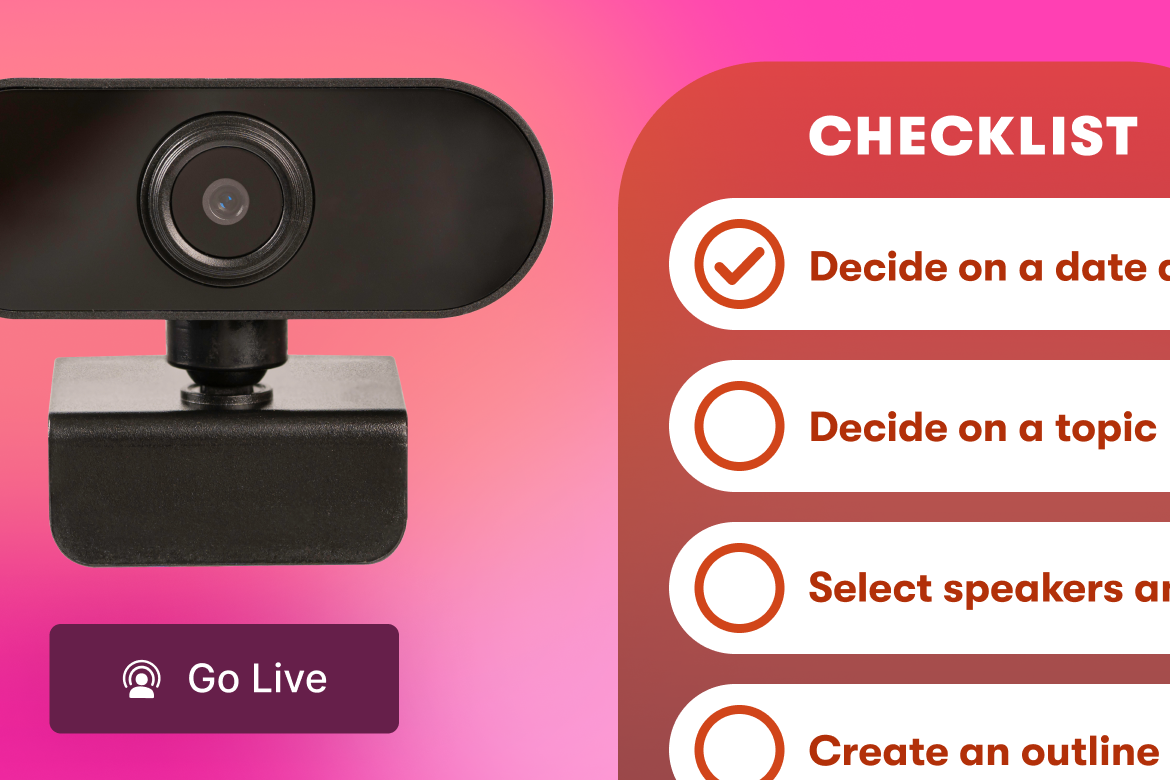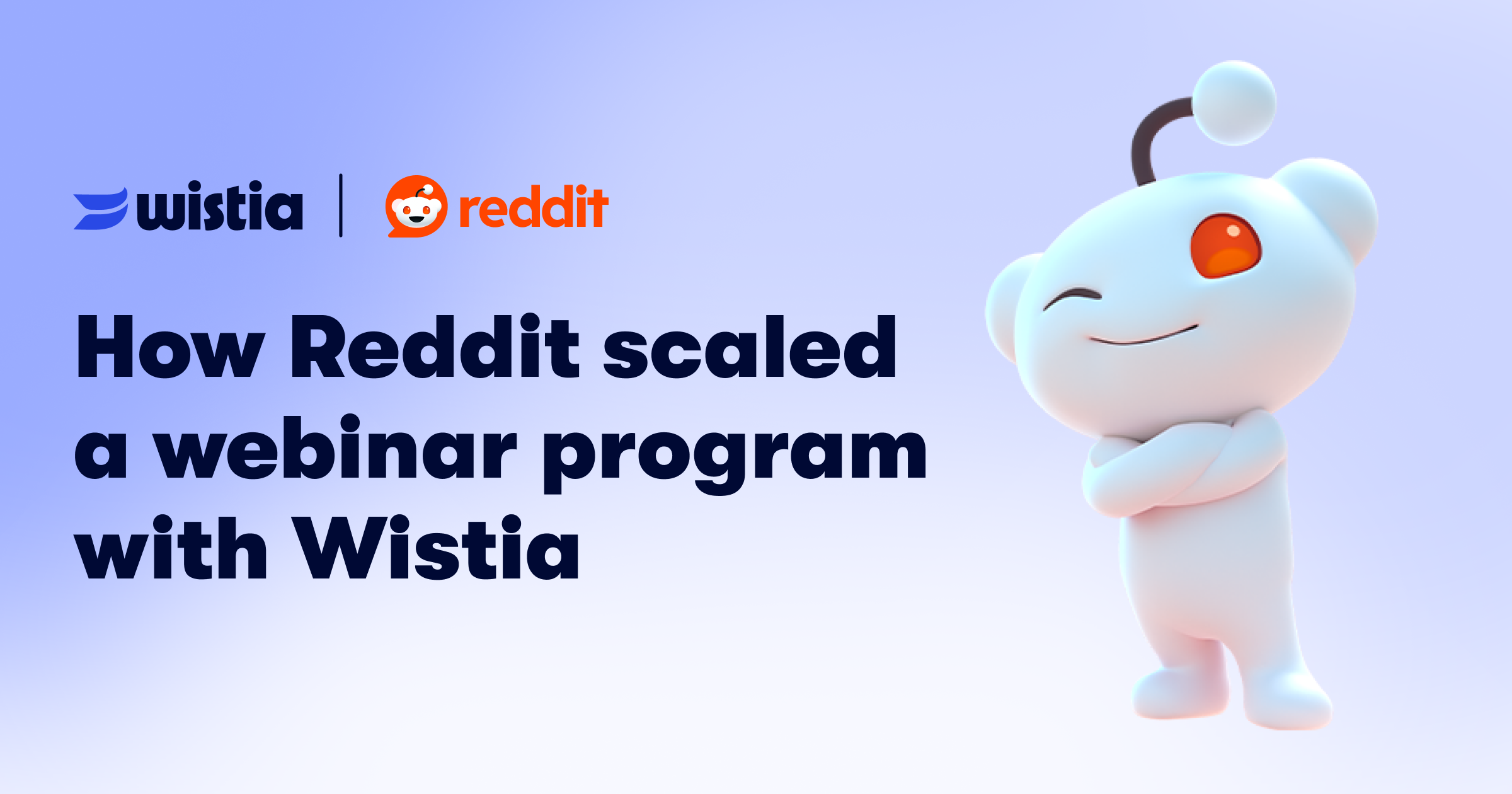Planning Makes Perfect: 5 Podcast Pre-Production Tips from Wistia Studios
August 4, 2020
Topic tags
Whether you’re plugging in a brand new microphone to create your very first podcast or you’re a podcast pro, actions you take during the pre-production stage can set you up for podcasting success and save you a ton of time!
In this post, we’ll run through our top podcast pre-production tips that’ll help you create a solid podcast structure, prepare you for hosting guests, get a podcasting station set up for yourself, and much more. So without further ado, here’s how you can make podcasting a whole lot easier and organized — you can thank us later!
What is “pre-production”?
Pre-production is the planning process that comes before any project. For podcasting, it’s followed by the stages of recording and editing.
Why is pre-production so important?
Think of pre-production like packing for a camping trip out in the wilderness. You wouldn’t want to forget water or your tent! In the context of podcast creation, pre-production is important because it’ll simply make your life easier when it comes to recording, editing, and getting your podcast out into the world.
5 podcast pre-production tips
1. Establish a structure and stick with it
During the pre-production stage of your podcast, you can make key creative decisions that’ll shape your show. A few things you’ll want to consider are your host(s), intro/outro, segments, episode length, and release cadence.
Hosts/Co-hosts
Decide whether or not you want your show to be hosted by one or two people. These will be the voices of your show, so it’s important to pick engaging storytellers to deliver your podcast’s message to your listeners.
Intro/outro
Take time to think about the intro/outro of your podcast. Some shows use popular music, create a custom jingle, or pull audio clips to tease the episode, but our favorite intro hack is short and simple — have the same scripted intro tag for each show. No matter the route you choose, it’s a good idea to give a brief description of what your podcast is all about for any potential new listeners. Consistency will help give your show an identity and develop your brand.
“No matter the route you choose, it’s a good idea to give a brief description of what your podcast is all about for any potential new listeners. Consistency will help give your show an identity and develop your brand.”
And when you’re ending your episode, you can thank people for listening, ask for a review, and tell folks where they can engage with your show, like on social media or your website. You can also let listeners know when they’ll hear from you again and tease the next episode. Podcast endings are also a great place for hidden episode “easter eggs” like a funny blooper or special offer for your most engaged listeners.
Segments
Segments are a great way to keep your listeners’ attention throughout an episode. Depending on the premise of your podcast, your segments could be anything you cook up that makes sense. For example, The NPR Politics Podcast has a segment called “Can’t Let It Go,” covering topical news and current events; Brand Party Podcast has a segment sharing listener feedback from social media; and SaaS Breakthrough has a game segment called “Lightning Round Questions.”
Episode length and release cadence
Your podcast’s premise and release cadence will impact how long your episode length should be. Think about what makes the most sense for listeners to digest. According to The Audacity to Podcast, the recommended length for a daily podcast is 1–15 minutes, a weekly podcast is 15–60 minutes, bi-weekly is 60 minutes, and monthly is 60–90 minutes.
Making an episode outline is also a helpful way to keep you organized and cognizant of time when you actually go to hit record. If you make an episode outline, write out estimated time stamps for each section of your show so you have a better idea of when to wrap up a segment and move onto the next one. Almost as if you’re giving a presentation on a topic you’re super excited about, it can be easy to accidentally record a two-hour-long episode by accident — which will definitely add more time to the editing process. Keep the pace going with a clear outline and keep a close eye on the clock as you record.
2. Prep your guests (if you have them)
One popular podcast format is interview-style, which depends on booking guests for your show. Once you have your guests locked in, there are a few easy ways you can set them, and yourself, up for success when it’s time to hit record.
After booking a guest, it can be incredibly helpful to do a pre-interview call with them to identify interesting storylines or topics they can easily speak to. This way, you’ll know the right questions to ask that’ll prompt them to give great answers! You’ll also get a feel for how to make your conversation flow.
Sending guests a document detailing what to expect is another way to get them prepped. Give them a preview of your questions before your interview. Let them know if you’d like them to record their side of the conversation separately — and if they’re not quite as tech-savvy as you, provide clear directions for recording. Help them out with some tips for capturing clear audio.
To ensure everything sounds smooth, you can even ask them to send back a test audio clip. This will help you get an idea of what everything will sound like so you can troubleshoot ahead of your show. This can seem like a lot to ask of your guest — so it’s also OK to play it by ear. The bottom line is you want your guest to come across as clearly as possible so that your audience can hear and benefit from the conversation without distraction.
3. Do your research and practice
Whether you’re the host of the show or writing the outline, it’s important to do your research well in advance about the topics you want to cover. When you know your stuff, your expertise will come across in your recordings and instill more trust in your listeners. And if you have guests on your show, it’ll help them trust you more, too.
After you’ve done your research, don’t underestimate the power of practicing! Hearing yourself over audio can be just as uncomfortable as re-watching your scenes after shooting a video for the first time. So we mean it when we say practice, practice, practice to build your podcasting confidence. Take notes of things you dislike or think you need to improve upon when you play your recording back. Then on your next go, we bet you’ll hear the difference!
“Take notes of things you dislike or think you need to improve upon when you play your recording back.”
4. Set up a podcasting station
If you don’t have your own studio to record a podcast, don’t fret! We know some hacky ways you can achieve clear audio in your remote environment.
At home, reverb and echo are challenges you might have to overcome. To reduce soundwaves bouncing off walls, you can hang blankets to dampen the room. Or, if you want, build a pillow fort! That can help absorb all of the echoes and reflections of your voice.
Of course, there’s no replacement for good mic placement. The microphone should always be 2–4 inches from your face. That’s close! A lot closer than many people think. The further the microphone is away from your mouth, the more of the room you’ll hear, so get comfortable being nice and cozy with your mic to reduce the noise.
“The further the microphone is away from your mouth, the more of the room you’ll hear, so get comfortable being nice and cozy with your mic to reduce the noise.”
External sound can also get in the way. If possible, pick a studio location away from the outside world to avoid distractions like weather, traffic, or construction. Your fridge or furnace kicking on might also be a nuisance. And, we can’t forget the kids. We love ‘em, but they might be a source of distraction.
Lastly, you may not know this, but if you’re looking for a personal voice-over booth, look no further than your car. Cars are made to be really sound-isolating, making for a great audio recording booth.
5. Get comfortable with your imperfections
Finally, to help you settle any nervous jitters about getting started with podcasting, we want you to know that, unlike video, with podcasts there’s less focus on being “perfect.” Being comfortable and connecting with your audience is more important than getting a flawless take. And remember, you can always edit out imperfections or craft your story to your taste in post-production. Instead, focus on making sure your message and story are as compelling as possible.
The power of pre-production
Pre-production is a process we don’t think any podcaster, beginner or advanced, should overlook. By considering these things before you hit record, you’ll have an easier time editing and getting your podcast out into the world. If you have any other podcast pre-production tips, we’d love to hear them — let us know in the comments below!






